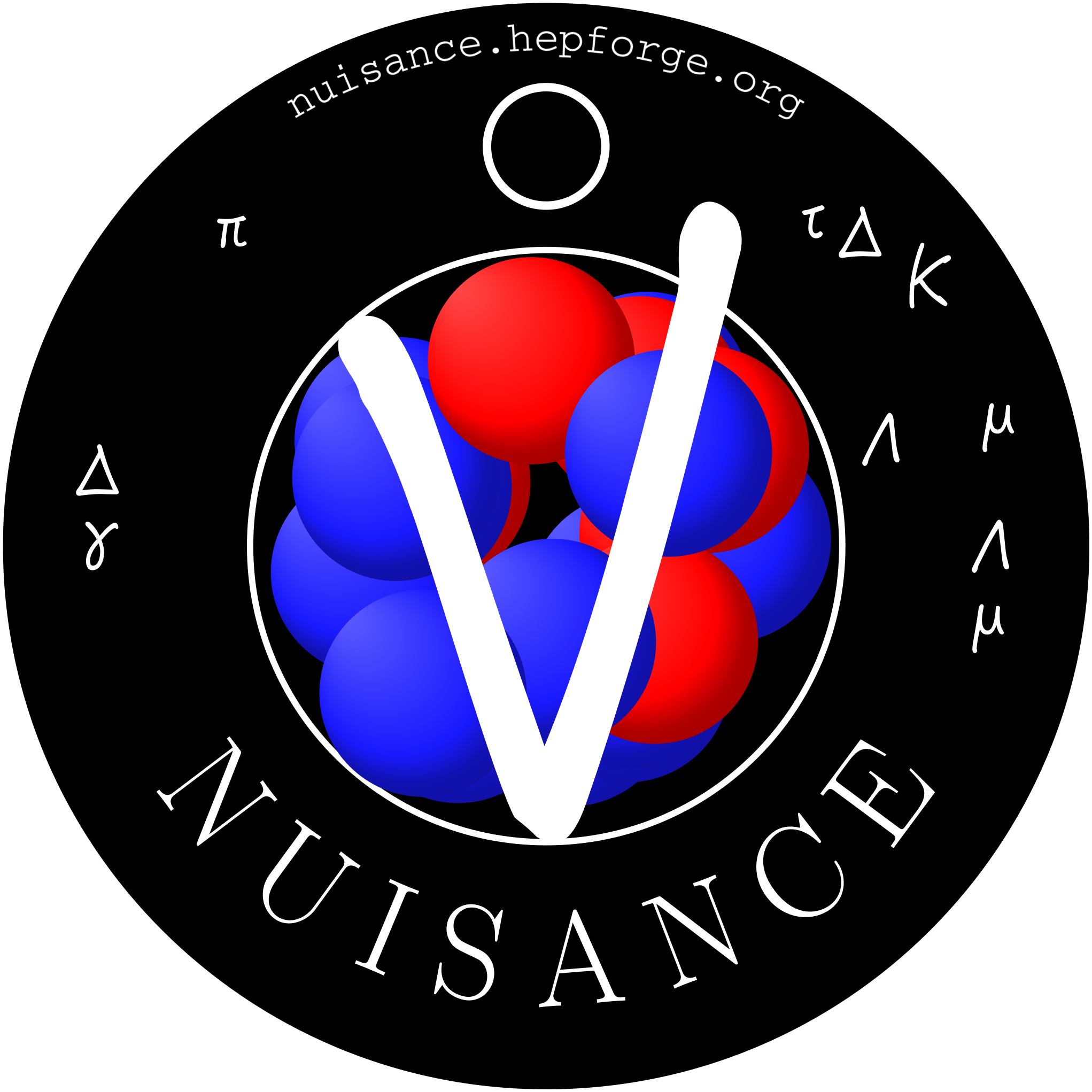|
|
close
Warning:
Can't synchronize with repository "(default)" ("(default)" is not readable or not a Git repository.). Look in the Trac log for more information.
- Timestamp:
-
Jan 6, 2017, 5:33:08 PM (8 years ago)
- Author:
-
Clarence Wret
- Comment:
-
--
Legend:
- Unmodified
- Added
- Removed
- Modified
-
|
v65
|
v66
|
|
| 121 | 121 | In the case of our T2K CC1π^+^ H,,2,,O data, we're dealing with 1D distributions. They should therefore inherit from the `Measurement1D` base class, as mentioned [#point_base earlier]. The `Measurement1D` class is implemented in `src/FitBase/Measurement1D.cxx`. |
| 122 | 122 | |
| 123 | | NUISANCE requires a `constructor` and `destructor` for the class, and we'll need to overload `MeasurementBase` methods which define the dependent variable(s) (p,,mu,, in our case) and what our signal is (CC interaction with one muon and one positive pion with no other pions or mesons and any number of nucleons in our case). The `MeasurementBase` functions which we need to overload are `MeasurementBase::isSignal(FitEvent *event)` and `MeasurementBase::FillEventVariables(FitEvent *event)`. |
| | 123 | NUISANCE requires a `constructor` and `destructor` for the class, and we'll need to overload `MeasurementBase` methods which define the dependent variable(s) (p,,µ,, in our case) and what our signal is (CC interaction with one muon and one positive pion with no other pions or mesons and any number of nucleons in our case). The `MeasurementBase` functions which we need to overload are `MeasurementBase::isSignal(FitEvent *event)` and `MeasurementBase::FillEventVariables(FitEvent *event)`. |
| 124 | 124 | |
| 125 | 125 | The `FitEvent` class is an object which contains information about one single event: all the particles, their kinematics and their status after the interaction, the interaction channel which produced the final state, possible secondary interactions, the interaction target, and so on. The `FitEvent` class is implemented in `src/FitBase/FitEvent.cxx` and essentially the generator-independent common event format which NUISANCE uses for the generator events. |
| … |
… |
|
| 185 | 185 | * `TMatrixDSym *fFullCovar`: The covariance matrix |
| 186 | 186 | * `TMatrixDSym *covar`: The inverted covariance matrix (bad naming, sorry!) |
| 187 | | * `double fScaleFactor`: The scaling factor we need to go from a event rate to a cross-section (N,,evt,,(p,,mu,,) -> dSig(p,,mu,,)) |
| | 187 | * `double fScaleFactor`: The scaling factor we need to go from a event rate to a cross-section (N,,evt,,(p,,µ,,) -> dSig(p,,µ,,)) |
| 188 | 188 | |
| 189 | 189 | |
| … |
… |
|
| 263 | 263 | |
| 264 | 264 | [=#point_muon_dist] |
| 265 | | === For the p,,mu,, distribution === |
| | 265 | === For the p,,µ,, distribution === |
| 266 | 266 | |
| 267 | 267 | To get the muon momentum, we first need a muon in the event. The function `FitEvent::NumFSParticle(int pdg)` counts the number of final-state particles with pdg-code `pdg` and returns that number. So our first check is |
|
